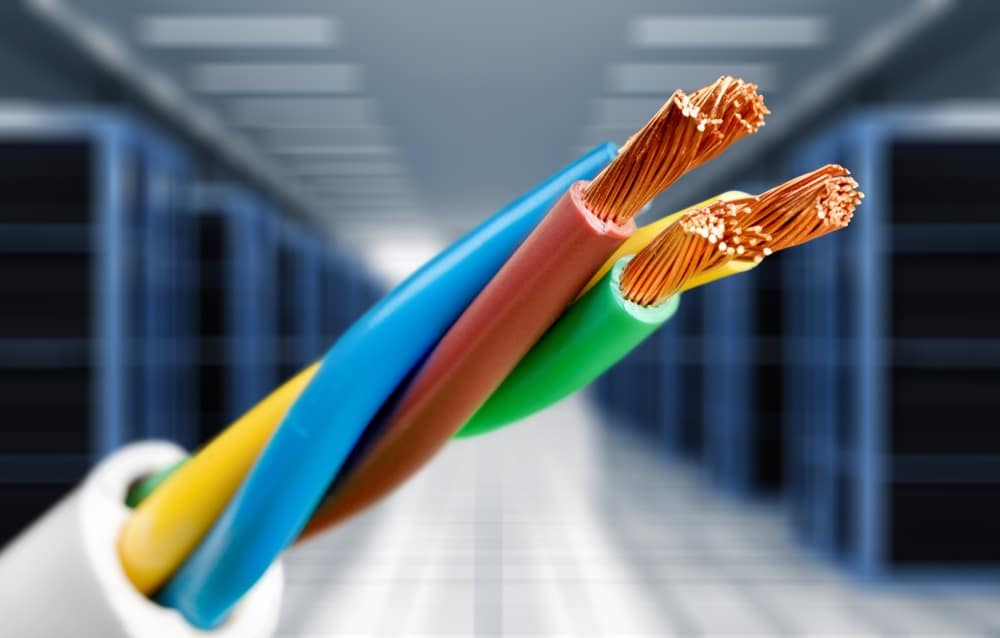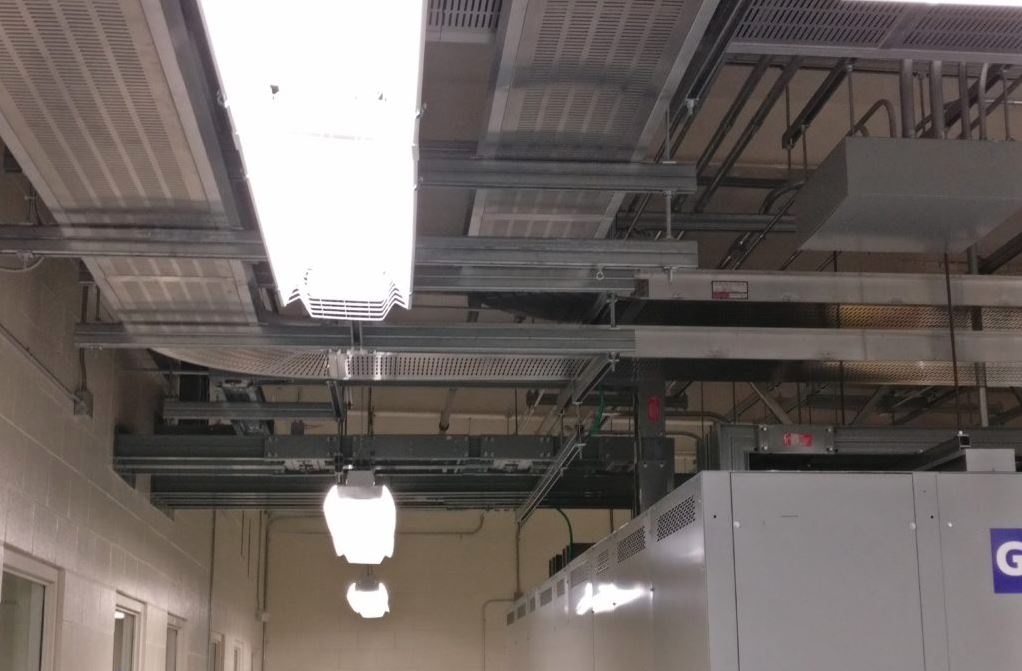the use of specialized cables. These applications include environments with high exposure to chemicals, extreme temperatures, or other harsh conditions. Examples include:
Chemical-Resistant Cables: Designed to withstand exposure to corrosive substances, these cables are used in chemical processing plants and other harsh industrial environments.
High-Temperature Cables: These cables are capable of functioning in extreme heat, making them suitable for furnaces, foundries, and other high-temperature applications.
Submersible Cables: Used in environments where cables are submerged in water or other liquids, such as in wastewater treatment plants or underwater installations.

Classification of Industrial Building Cables
Industrial building cables can be classified based on various criteria, including their construction, application, and performance characteristics.
1. Based on Construction
Single-Core Cables: Consists of a single conductor surrounded by insulation. These cables are typically used in applications where only one circuit is required.
Multi-Core Cables: Contain multiple conductors within a single cable, each insulated from the others. These are used in applications where multiple circuits are required within the same cable.
Shielded Cables: Have an additional layer of shielding to protect against electromagnetic interference. This is essential in environments with a high risk of interference from other electrical devices.
Armored Cables: Feature a protective metal sheath, providing mechanical protection and resistance to physical damage. These are commonly used in industrial and outdoor settings where durability is crucial.
2. Based on Application
Power Cables: Used for transmitting electrical power from a power source to various devices and equipment.
Control Cables: Transmit control signals between devices, often used in automation and industrial control systems.
Instrumentation Cables: Used to transmit low-voltage signals for monitoring and control purposes in industrial applications.
Communication Cables: Designed for transmitting data and communication signals, including telephone, internet, and video signals.
Specialty Cables: Tailored for specific applications, such as fire-resistant cables, chemical-resistant cables, and high-temperature cables.
3. Based on Performance Characteristics
Low-Voltage Cables: Designed for applications with voltage levels up to 1,000 volts and commonly used in general power distribution within buildings.
Medium-Voltage Cables: Used for voltage levels between 1,000 and 35,000 volts, typically in industrial and infrastructure projects.
High-Voltage Cables: Handle voltage levels above 35,000 volts, used in power transmission and distribution networks.
Flexible Cables: Offer high flexibility, making them suitable for applications requiring frequent movement or bending.
Heat-Resistant Cables: Capable of withstanding high temperatures, used in environments with extreme heat.
Technological Advancements in Industrial Building Cables
The industrial building cable industry has seen significant technological advancements, driven by the need for improved performance, safety, and efficiency.
1. Enhanced Materials
Advancements in material science have led to the development of cables with enhanced properties. For example:
Cross-Linked Polyethylene (XLPE): Used as insulation material in power cables, XLPE offers excellent thermal and chemical resistance, improving the cable's durability and performance.
Flame-Retardant Materials: Modern cables often use flame-retardant materials to enhance fire safety, reducing the risk of fire spread in case of an electrical fault.
2. Smart Cables
The integration of smart technology into industrial building cables is revolutionizing the industry. Smart cables are equipped with sensors and monitoring systems that provide real-time data on various parameters, such as temperature, voltage, and current. This enables proactive maintenance and early detection of potential issues, enhancing the reliability and safety of electrical systems.
3. High-Speed Data Transmission
The demand for high-speed internet and data transmission has led to the development of advanced communication cables. Fiber optic cables, for instance, offer unprecedented data transmission speeds and bandwidth, supporting the growing needs of modern communication networks in industrial settings.
4. Eco-Friendly Cables
Sustainability is a growing concern in the industrial sector, leading to the development of eco-friendly cables. These cables use recyclable materials and are designed to have minimal environmental impact. Additionally, advancements in manufacturing processes have reduced the carbon footprint associated with cable production.
5. Enhanced Durability
Modern industrial building cables are designed to be more durable, with improved resistance to environmental factors such as moisture, chemicals, and UV radiation. This enhances their longevity and reduces the need for frequent replacements, lowering maintenance costs and improving overall efficiency.
Safety and Standards
Safety is paramount in industrial environments, and industrial building cables must adhere to strict standards and regulations to ensure their safe use. Various organizations and regulatory bodies establish these standards, including:
National Electrical Code (NEC): In the United States, the NEC provides guidelines for the safe installation of electrical wiring and equipment. It specifies the types of cables that can be used in different applications and the installation practices that must be followed.
International Electrotechnical Commission (IEC): The IEC develops international standards for electrical and electronic technologies, including industrial building cables.
Underwriters Laboratories (UL): UL certifies the safety and performance of industrial building cables, ensuring they meet rigorous testing and quality standards.
Compliance with these standards is crucial for ensuring the safety, reliability, and performance of industrial building cables in various applications.

Future Trends in Industrial Building Cables
The industrial building cable industry continues to evolve, driven by technological advancements and changing market demands. Several trends are shaping the future of industrial building cables:
1. Increased Adoption of Renewable Energy
The shift towards renewable energy sources, such as solar and wind power, is driving the demand for specialized industrial building cables.
Solar cables, for instance, are designed to withstand high temperatures and UV exposure, making them suitable for photovoltaic systems. Additionally, cables used in wind power installations must be flexible and durable to handle the constant movement and environmental exposure.
2. Smart Factories and Industry 4.0
The rise of smart factories and Industry 4.0 is transforming the industrial sector. Smart cables equipped with sensors and monitoring systems are becoming integral components of these intelligent structures, enabling seamless communication and control of various industrial processes.
These cables facilitate the integration of automation, data exchange, and advanced manufacturing technologies, enhancing productivity and efficiency.
3. Advanced Manufacturing Techniques
Advancements in manufacturing techniques, such as 3D printing and automation, are enhancing the production of industrial building cables. These technologies enable more precise and efficient manufacturing processes, resulting in higher quality and more reliable cables. Additionally, advanced manufacturing techniques allow for the customization of cables to meet specific industrial requirements.
4. Emphasis on Sustainability
Sustainability is increasingly important in the industrial sector, leading to a greater focus on eco-friendly cables.
Manufacturers are investing in research and development to create cables with lower environmental impact, using recyclable materials and energy-efficient production methods.
Sustainable cables not only reduce the carbon footprint but also contribute to the overall sustainability goals of industrial facilities.
5. Enhanced Cybersecurity
As industrial building cables become more integrated with digital technologies, cybersecurity is becoming a critical concern.
Ensuring the security of data transmitted through industrial building cables is essential to protect against cyber threats and maintain the integrity of communication networks.
Advanced encryption and security protocols are being developed to safeguard data and prevent unauthorized access.
Industrial building cables are vital components in the construction and operation of industrial facilities, providing the necessary infrastructure for power distribution, control systems, communication networks, and safety systems.
Their diverse applications, ranging from electrical power transmission and data communication to HVAC systems and specialized industrial environments, highlight their importance in modern industrial operations.
The classification of industrial building cables based on construction, application, and performance characteristics allows for the selection of the appropriate cable for each specific need.
Technological advancements have significantly enhanced the performance, safety, and sustainability of industrial building cables.
Innovations in materials, smart technology, high-speed data transmission, and eco-friendly designs are driving the evolution of the industry. As the industrial landscape continues to change, the demand for advanced, reliable, and sustainable industrial building cables will only grow, shaping the future of industrial operations.
In summary, industrial building cables are essential for ensuring the efficient, safe, and reliable operation of industrial facilities.
Their continued development and innovation are critical to meeting the evolving needs and challenges of the industrial sector, paving the way for a more connected, automated, and sustainable future.